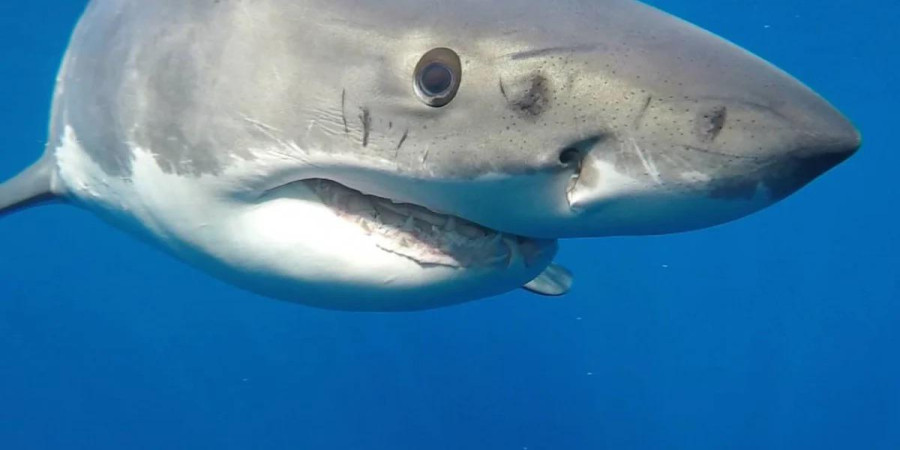

Beyond Black and White: Unveiling the Mystery of Shark Eyes
Sharks, with their sleek bodies and powerful jaws, often conjure images of menacing black eyes. But is this portrayal entirely accurate? While a shark's stare might seem like a bottomless pit, the reality is more fascinating. Let's delve deeper into the science behind shark eyes and discover what lies beneath the surface.
Not Quite Black and White
Contrary to popular belief, most sharks don't have completely black eyes. Their irises, the colored part of the eye, often range from dark brown to a deep, almost inky blue. This misconception likely stems from a few factors:
- Lighting: In murky ocean depths, where many sharks dwell, the lack of light can make their dark irises appear black.
- Pupil Dilation: Like humans, sharks have pupils that adjust to light levels. In low-light conditions, these pupils widen significantly, further contributing to the illusion of a black eye.
- Distance and Perception: Underwater visibility can be limited, and from afar, distinguishing the iris from the pupil becomes difficult, creating the impression of a black orb.
A Glimmer of Adaptation
The actual color of a shark's iris plays a crucial role in its vision. Here's how:
- Light Sensitivity: Some sharks, like the blue shark, have a reflective layer behind the retina called the tapetum lucidum. This layer acts like a mirror, reflecting light back through the photoreceptor cells, enhancing their ability to see in low-light environments. The dark iris may complement this adaptation by minimizing light scattering within the eye.
- Depth Perception: While some deep-sea sharks lack a colored iris altogether, some shallow-water species, like the great white shark, have a blue iris. This coloration might improve their ability to distinguish between different colors and enhance depth perception in brighter environments.
Seeing the World Through Shark Eyes
Understanding shark eye anatomy reveals even more adaptations:
- Nictitating Membrane: Some sharks possess a transparent eyelid called a nictitating membrane. This extra eyelid acts like a built-in goggle, protecting their eyes from debris and providing additional lubrication.
- Scleral Cartilages: Unlike most bony fish, sharks have a flexible, cartilaginous skeleton around their eyes. This allows them to rotate their eyes somewhat independently, offering a wider field of view without needing to turn their heads constantly.
Conclusion
Sharks may not have the stereotypical "black eyes" often portrayed in movies. Their eye color and adaptations play a vital role in their underwater vision, allowing them to thrive in diverse environments. By appreciating the complexity of shark eyes, we gain a deeper understanding of these remarkable creatures and their place in the ocean ecosystem.
References:
- Sharks and Their Vision: https://animals.howstuffworks.com/fish/sharks/shark-senses3.htm
- Shark Anatomy and Physiology: https://myfwc.com/fishing/saltwater/recreational/sharks/
- The Tapetum Lucidum: https://www.frontiersin.org/articles/10.3389/fncel.2022.984282
Popular articles

Apr 11, 2024 07:40 PM

May 25, 2024 08:09 PM

Apr 11, 2024 07:22 PM

Apr 10, 2024 07:59 PM

Mar 14, 2024 07:53 PM
Comments (0)